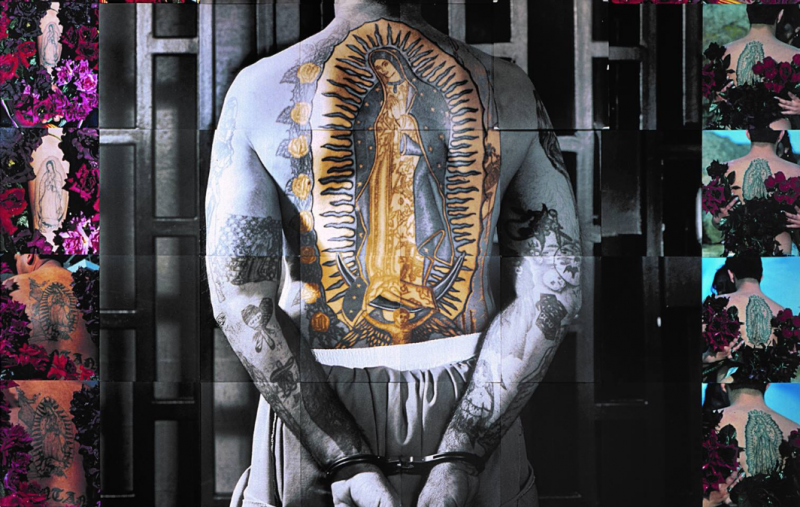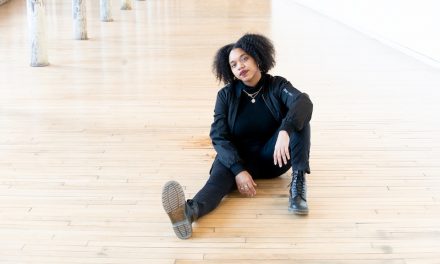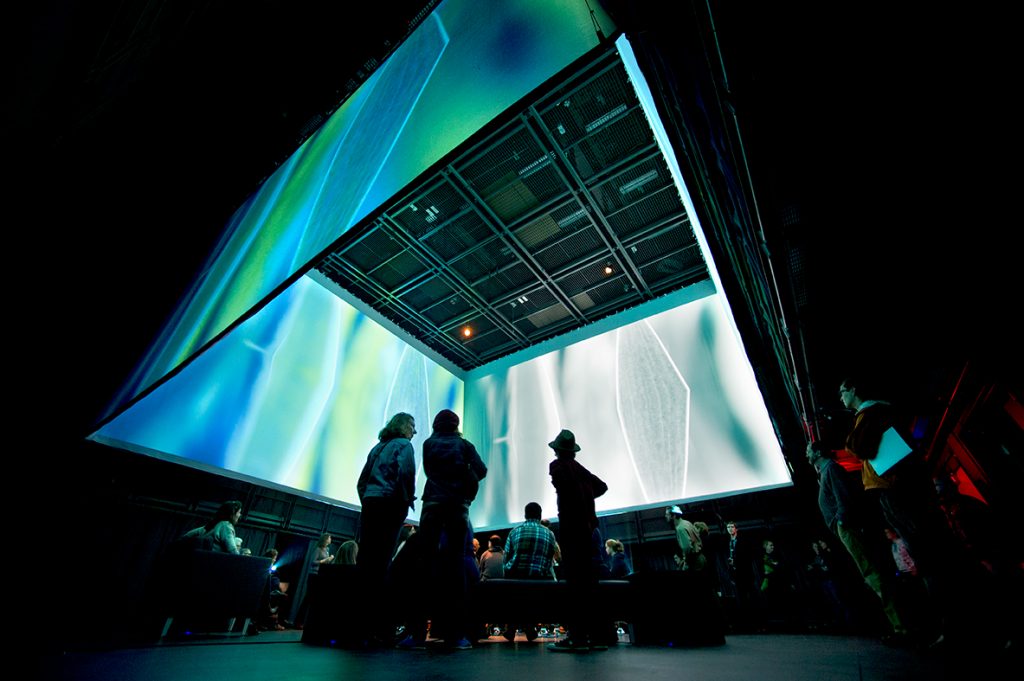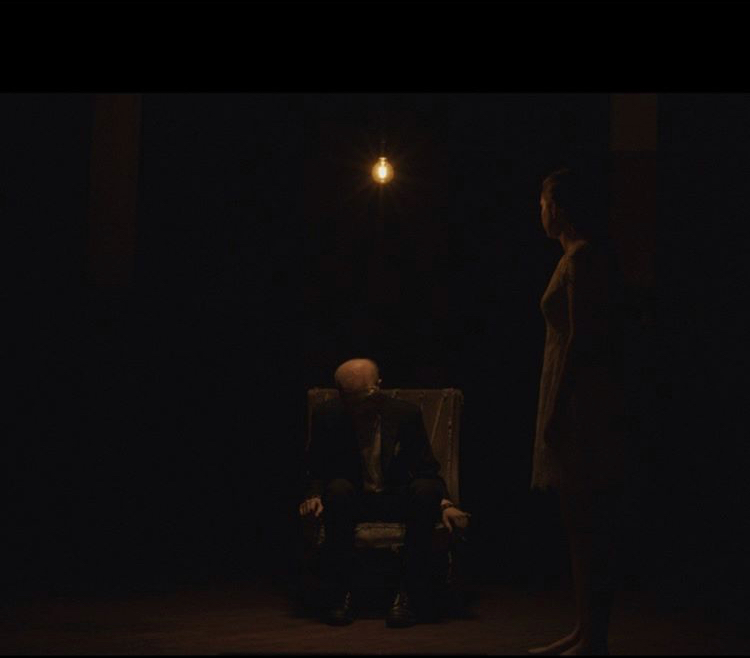Above: Delilah Montoya (American, b. 1955), La Guadalupana, 1998. Williams College Museum of Art. Museum purchase, Kathryn Hurd Fund
A symposium focused on Latinx art history in the U.S. and the future of a more diverse collective of artists and curators will take place at The Clark Art Institute in Williamstown, Mass. on Saturday, May 4 from 9 a.m. to 5 p.m.
“Alternative Art Histories: Future Directions in US Latinx Art”—organized by Williams College professor of art history and Latinx studies Ondine Chavoya and Williams College art history graduate student and MASS MoCA Graduate Curatorial Fellow Marco Antonio Flores—will feature Latinx speakers from across the country who specialize in curating, exhibiting, restoring and making art.
Professor Chavoya joined Williams College 17 years ago to help build an interdisciplinary program for Latinx studies in the art history department. He is trained in American modern and contemporary art, particularly in Chicanx and Latinx art, and has curated a number of exhibitions focused on these communities over the course of his career such as the currently touring (and heading to Williams College in the fall) “Axis Mundo: Queer Networks in Chicano L.A.,” and “Asco: Elite of the Obscure, A Retrospective, 1972-1987” (2011-2013).
Chavoya recently spoke with The Collaborative about the significance of the Clark Art event, the power curators of museum exhibitions have on our culture and understanding of art history and the presence of Latinx and Chicanx artists and historians in the Berkshires:
CHAVOYA: It doesn’t come out of a vacuum. Even with MASS MoCA, and this has escalated over the years, when it comes to the artists they have showcased you can see a number of Latinx in exhibition and as curators but if you were to go around the Berkshires and ask, ‘What do you know about Latinx artists at MASS MoCA? Who have you seen?’ people might be a little confused or be hard-pressed to say, ‘I saw works by Rubén Ortíz-Torres over the years.’ Maybe that’s because they haven’t been displayed in the exclusive framework of Latinx art. They are just part of the exhibition programming… and that may be an important curatorial decision.
The idea of the symposium, what really motivated it, is the number of graduate students studying at Williams—a small but robust and very engaged group of students who are interested in pursuing futures in the art world—focused on Latinx art history connected to American and European history, more broadly. In some ways it comes out of our conversations, Marco Antonio Flores and myself, about the field and the future of the field, where the needs and demands are.
COLLABORATIVE: There are quite a few speakers lined up for Saturday. Was gathering this group more about recognizing that each professional has something very specific to bring to the table or was it about finding a range of museum curators, educators and art historians who have studied Latinx art history over their careers?
CHAVOYA: In some ways it’s a curated list and in many ways it’s a dream team. We were looking for a range of professional experience and expertise as well as people who have been at the forefront of breaking new ground in the fields of American art, museum studies and art history while being dedicated to studying, promoting, analyzing and interpreting Latinx and Chicanx art. We also have some people from interdisciplinary perspectives, in performance art and such, who might help us think of questions related to, but slightly outside of, the discipline of art history.
It’s a particular generation as well. It’s not necessarily the most emergent and it’s not, as we would say in Latinx circles, the veteranos or the veterans. In some ways it’s like a cohort, people who have come up together in the field. There is a lot of collaboration and a lot of intersecting history. The keynote speaker [University of California Berkeley Professor Laura E. Pérez] was both a teacher to Flores and myself. Rita Gonzalez of LACMA [Los Angeles County Museum of Art] is the person I curated the “Asco: Elite of the Obscure” show with many years ago.
One of the things [Gonzalez] and I often talked about as we were coming up in the field was, we recognized we so many great artists in the Chicanx and broader Latinx arts communities but because there were so few people who had the opportunity to train in the field in art history, those artists were kind of forced to be curators. They helped found alternative art spaces and we would marvel at that, the capacity to create and forge this field by taking on these professional responsibilities in addition to being an artist.
That field began to develop and I think that has to do with how closed off the field of art history was and sometimes continues to be. This conference has a lot to do with the power and legacy of art in the Berkshires, to have a mark on the future field of curators and museum directors.
COLLABORATIVE: It’s interesting because people may not realize the power or influence is happening behind the scenes, or think about that question of ‘Who put this artist on exhibition and why?’
CHAVOYA: To analyze and document the work as well. To promote the work in academia and museum collection and presentation. Those things are really important. It is important that the work be collected and preserved but it’s just as essential to understand how best to present that work to the public.
COLLABORATIVE: When you’re talking about the future of this field, what can people learn by recognizing how art has been archived and curated?
CHAVOYA: I think that’s something I’m trying to get a better sense of. Things have changed somewhat rapidly in the field—at an unprecedented pace. There is a growing recognition around Latinx art history across the country. I’ve just come from the Latino Art Now conference in Houston and, before that, participated in the Latinx Sessions discussions that got kind of heated at the Perez Art Museum in Miami. There’s growing interest among students who are hungry to learn more about this history.
I hope this symposium helps us take stock of where we are and what still needs to happen, but also, to have that dialogue with the public will be pivotal.
COLLABORATIVE: In terms of subject matter and having that kind of discussion, what kind of topics can attendees look forward to?
CHAVOYA: During the conversations [Saturday] we are pairing speakers in a way that we hope will bring out the intersections of their practice. In the morning we’re exploring some of the ideas of museum representation, museum leadership and curatorial practice from the funding perspective to directing a museum to heading a department of contemporary art at a major museum like LACMA. I hope the conversation will come back to some critical questions we’re trying to highlight. Later in the day we’re bringing together scholars that will make it an interdisciplinary way–coming from the specific areas of their research–that will connect to our key themes.
COLLABORATIVE: In terms of questions that need to be answered or themes addressed, what kind of takeaway do you want the audience to have?
CHAVOYA: I’m hoping that for people who are already familiar with the field, this will provide an opportunity to hear from and talk to experts working in the field right now. I hope, for people who are interested but haven’t had a critical or immersive exposure previously to Latinx art history, this can provide an exciting crash course and introduce them to major developments through some of the key voices—as well as developments that have been quietly happening all along.
Many of these artists have been to the Berkshires and the Capital Region before but for some of them it’s their first time so I’m also hopeful that there is the potential to introduce them to the bounty we have here in the Berkshires and introduce future collaborations. It’s also about bringing people together to start conversations that may lead to an exhibition or artist residency.

“Alternative Art Histories: Future Directions in US Latinx Art” at The Clark Art Institute in Williamstown, Mass. takes place Friday, May 3, 4 PM with a keynote speech and Saturday, May 4, 9 AM–5 PM. The symposium is free and open to the public.





